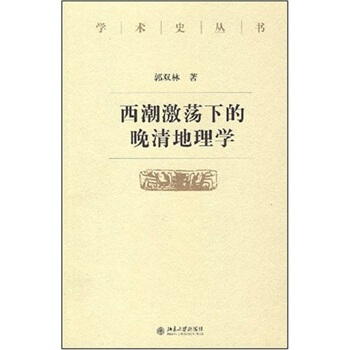![线性代数群 [Linear Algebraic Groups]](https://pic.qciss.net/10857737/fcb2f257-227e-43db-bed7-c73076c42824.jpg)

具体描述
内容简介
For this printing, I have corrected some errors and made numerous minor changes in the interest of clarity. The most significant corrections occur in Sections 4.2, 4.3, 5.5, 30.3, 32.1, and 32.3. I have also updated the biblio-graphy to some extent. Thanks are due to a number of readers who took the trouble to point out errors, or obscurities; especially helpful were the detailed comments of Jose Antonio Vargas.内页插图
目录
I.AlgebraicGeometry0.SomeCommutativeAlgebra
1.AffineandProjectiveVarieties
1.1 IdealsandAflineVarieties
1.2 ZariskiTopologyonAffineSpace
1.3 IrreducibleComponents
1.4 ProductsofAffineVarieties
1.5 AffineAlgebrasandMorphisms
1.6 ProjectiveVarieties
1.7 ProductsofProjectiveVarieties
1.8 FlagVarieties
2.Varieties
2.1 LocalRings
2.2 Prevarieties
2.3 Morphisms
2.4 Products
2.5 HausdorffAxiom
3.Dimension
3.1 DimensionofaVariety
3.2 DimensionofaSubvariety
3.3 DimensionTheorem
3.4 Consequences
4.Morphisms
4.1 FibresofaMorphism
4.2 FiniteMorphisms
4.3 ImageofaMorphism
4.4 ConstructibleSets
4.5 OpenMorphisms
4.6 BijectiveMorphisms
4.7 BirationalMorphisms
5.TangentSpaces
5.1 ZariskiTangentSpace
5.2 ExistenceofSimplePoints
5.3 LocalRingofaSimplePoint
5.4 DifferentialofaMorphism
5.5 DifferentialCriterionforSeparability
6.CompleteVarieties
6.1 BasicProperties
6.2 CompletenessofProjectiveVarieties
6.3 VarietiesIsomorphictoP
6.4 AutomorphismsofP
II.AflineAlgebraicGroups
7.BasicConceptsandExamples
7.1 TheNotionofAlgebraicGroup
7.2 SomeClassicalGroups
7.3 IdentityComponent
7.4 SubgroupsandHomomorphisms
7.5 GenerationbyIrreducibleSubsets
7.6 HopfAIgebras
8.ActionsofAlgebraicGroupsonVarieties
8.1 GroupActions
8.2 ActionsofAlgebraicGroups
8.3 ClosedOrbits
8.4 SemidirectProducts
8.5 TranslationofFunctions
8.6 LinearizationofAffineGroups
III.LieAlgebras
9.LieAlgebraofanAlgebraicGroup
9.1 LieAlgebrasandTangentSpaces
9.2 Convolution
9.3 Examples
9.4 SubgroupsandLieSubalgebras
9.5 DualNumbers
10.Differentiation
10.1 SomeElementaryFormulas
10.2 DifferentialofRightTranslation
10.3 TheAdjointRepresentation
10.4 DifferentialofAd
10.5 Commutators
10.6 Centralizers
10.7 AutomorphismsandDerivations
IV.HomogeneousSpaces
11.ConstructionofCertainRepresentations
11.1 ActiononExteriorPowers
11.2 ATheoremofChevalley
11.3 PassagetoProjectiveSpace
11.4 CharactersandSemi-lnvariants
11.5 NormalSubgroups
12.Quotients
12.1 UniversalMappingProperty
12.2 TopologyofY
12.3 FunctionsonY
12.4 Complements
12.5 Characteristic0
V.Characteristic0Theory
13.CorrespondenceBetweenGroupsandLieAlgebras
13.1 TheLatticeCorrespondence
13.2 InvariantsandInvariantSubspaces
13.3 NormalSubgroupsandIdeals
13.4 CentersandCentralizers
13.5 SemisimpleGroupsandLieAlgebras
14.SemisimpleGroups
14.1 TheAdjointRepresentation
14.2 SubgroupsoraSemisimpleGroup
14.3 CompleteReducibilityofRepresentations
VI.SemisimpleandUnipotentElements
15.Jordan-ChevalleyDecomposition
15.1 DecompositionofaSingleEndomorphism
15.2 GL(n,K)andgl(n,K)
15.3 JordanDecompositioninAlgebraicGroups
15.4 CommutingSetsofEndomorphisms
15.5 StructureofCommutativeAlgebraicGroups
16.DiagonalizableGroups
16.1 Charactersandd-Groups
16.2 Tori
16.3 RigidityofDiagonalizableGroups
16.4 WeightsandRoots
VII.SolvableGroups
17.NilpotentandSolvableGroups
17.1 AGroup-TheoreticLemma
17.2 CommutatorGroups
17.3 SolvableGroups
17.4 NilpotentGroups
17.5 UnipotentGroups
17.6 Lie-KolchinTheorem
18.SemisimpleElements
18.1 GlobalandInfinitesimalCentralizers
18.2 ClosedConjugacyClasses
18.3 ActionofaSemisimpleElementonaUnipotentGroup
18.4 ActionofaDiagonalizableGroup
19.ConnectedSolvableGroups
19.1 AnExactSequence
19.2 TheNilpotentCase
19.3 TheGeneralCase
19.4 NormalizerandCentralizer
19.5 SolvableandUnipotentRadicals
20.OneDimensionalGroups
20.1 CommutativityofG
20.2 VectorGroupsande-Groups
20.3 Propertiesofp-Polynomials
20.4 AutomorphismsofVectorGroups
20.5 TheMainTheorem
VIII.BorelSubgroups
21.FixedPointandConjugacyTheorems
21.1 ReviewofCompleteVarieties
21.2 FixedPointTheorem
21.3 ConjugacyofBorelSubgroupsandMaximalTori
21.4 FurtherConsequences
22.DensityandConnectednessTheorems
22.1 TheMainLemma
22.2 DensityTheorem
22.3 ConnectednessTheorem
22.4 BorelSubgroupsofCG(S)
22.5 CartanSubgroups:Summary
23.NormalizerTheorem
23.1 StatementoftheTheorem
23.2 ProofoftheTheorem
23.3 TheVarietyG/B
23.4 Summary
IX.CentralizersofTori
24.RegularandSingularTori
24.1 WeylGroups
24.2 RegularTori
24.3 SingularToriandRoots
24.4 Regular1-ParameterSubgroups
25.ActionofaMaximalTorusonG/B
25.1 Actionofa1-ParameterSubgroup
25.2 ExistenceofEnoughFixedPoints
25.3 GroupsofSemisimpleRank1
25.4 WeylChambers
26.TheUnipotentRadical
26.1 CharacterizationofRu(G)
26.2 SomeConsequences
26.3 TheGroupsUa
X.StructureofReductiveGroups
27.TheRootSystem
27.1 AbstractRootSystems
27.2 TheIntegralityAxiom
27.3 SimpleRoots
27.4 TheAutomorphismGroupofaSemisimpleGroup
27.5 SimpleComponents
28.BruhatDecomposition
28.1 T-StableSubgroupsofBu
28.2 GroupsofSemisimpleRank1
28.3 TheBruhatDecomposition
28.4 NormalForminG
28.5 Complements
29.TitsSystems
29.1 Axioms
29.2 BruhatDecomposition
29.3 ParabolicSubgroups
29.4 GeneratorsandRelationsforW
29.5 NormalSubgroupsofG
30.ParabolicSubgroups
30.1 StandardParabolicSubgroups
30.2 LeviDecompositions
30.3 ParabolicSubgroupsAssociatedtoCertainUnipotentGroups
30.4 MaximalSubgroupsandMaximalUnipotentSubgroups
XI.RepresentationsandClassificationofSemisimpleGroups
31.Representations
31.1 Weights
31.2 MaximalVectors
31.3 IrreducibleRepresentations
31.4 ConstructionofIrreducibleRepresentations
31.5 MultiplicitiesandMinimalHighestWeights
31.6 ContragredientsandInvariantBilinearForms
32.IsomorphismTheorem
32.1 TheClassificationProblem
32.2 ExtensionofψTtoN(T)
32.3 ExtensionofψTtoZa
32.4 ExtensionofψTtoTUa
32.5 ExtensionofψTtoB
32.6 Multiplicativityofψ
33.RootSystemsofRank2
33.1 Reformulationof(A),(B),(C)
33.2 SomePreliminaries
33.3 TypeA2
33.4 TypeB2
33.5 TypeG2
33.6 TheExistenceProblem
XII.SurveyofRationalityProperties
34.FieldsofDefinition
34.1 Foundations
34.2 ReviewofEarlierChapters
34.3 Tori
34.4 SomeBasicTheorems
34.5 Borei-TitsStructureTheory
34.6 AnExample:OrthogonalGroups
35.SpecialCases
35.1 SplitandQuasisplitGroups
35.2 FiniteFields
35.3 TheRealField
35.4 LocalFields
35.5 Classification
Appendix.RootSystems
Bibliography
IndexofTerminology
IndexofSymbols
精彩书摘
Over the last two decades the Borel-Chevalley theory of Iinear algebraic groups(as further developed by Borel,Steinberg,Tits,and others)has made possible significant progress In a aurabef of areas:scmisimple Lie groups and arithmetic subgroups,p-adic groups,classical linear groups,finite simple groups,invariant theory。etc.Unfortunately,the subject has not been as accessible as it ought to be.in part due to the fairly substantial background in algebraic geometry assumed by Chevalley ,Borei , Borel,Tits .The difliculty of the theory also stems in Dart from the fact that the main results culminate a Iong series of arguments which are hard to“see through”from beginning to end.In writing this introductory text. aimed at the second year graduate level.I have tried to take these factors into account.First.the requisite algebraic geometry has been treated in fullin Chapter I.modulo some more.or-less standard results from commutative algebra (quoted in§o),e.g.,the theorem that a regular local ring is an integrally closed domain.The treatment is intentionally somewhat crude and is not at all scheme-oriented.In fact.everything is done over an algebraically closed field K(of arbitrary characteristic).even though most of the eventual applications involve a feld of definition k.I believe this c.an be iustified as follows.In order to work over k from the outset,it would be necessary to spend a good deal of time perfecting the foundations.and then the only rationality statements proved along the way would be Of a minor sort rcf (34.2)).The deeper rationality properties can only be appreciated after the reader has reached Chapter X.(A survey of such results,without proofs, is given in Chapter XlI.)
Second.a special effort has been made to render the exposition trans. parent.Except for a digression into characteristic 0 in Chapter V.the development from Chapter II to Chapter XI is fairly“linear”.covering the foundations,the structure of connected solvable groups,and then the structure,representations and classification of reductive groups.The Iecture notes of BoreI 41,which constitute an improvement of the methods in Chevalley,are the basic source for Chapters II-IV,Vl-X,while Chapter xI is a hybrid of Chevalley and SGAD.From27 on the basic facts about root systems arc used constantly:these are listed(with suitable ref- erences)in the Appendix.Apart from{io,the Appendix,and a reference to a theorem of Burnside in(1 7.5),the text iS self-contained.But the reader is asked to verifv some minor ooints as exercises.
……
前言/序言
用户评价
我花了相当长的时间来消化这本书中关于李代数与群之间的对应关系部分,坦白说,这绝对不是一本可以轻松快速翻阅的读物。它更像是一本需要你手持笔和纸,反复演算、画图、甚至自行构造反例来加深理解的“习作手册”。作者在处理李群的指数映射(Exponential Map)时,其对无穷小扰动的考量细致入微,几乎将微分几何的直觉完全融入了纯代数的框架之内。我尤其欣赏作者在引入Killing形式和半单性判据时的叙述方式,他没有直接抛出结论,而是通过一系列巧妙的矩阵运算和特征值分析,步步引导读者得出简洁而有力的结论。这种教学法虽然慢热,但一旦领悟,便能对结构稳定性产生深刻的洞察。对于那些想将理论知识应用到物理学或更高级的几何问题中的人,这本书提供的细致入微的代数“工具箱”是无可替代的。它教会我的不仅仅是结论,更是一种严密的数学思维方式。
评分这本书初读之下,便被其严谨的数学构建和对抽象概念的精妙处理所吸引。作者显然在代数几何与群论的交叉领域有着深厚的造诣,他并没有将线性代数群视为孤立的结构,而是将其置于更宏大的代数簇与李群的背景之下进行考察。书中对根系、Weyl群以及Borel子群的论述,层层递进,逻辑链条异常清晰。尤其值得称赞的是,作者在引入每一个新概念时,都会提供足够的动机和直观的几何解释,这极大地帮助了读者理解那些看似深奥的定义。例如,在讲解完连通性原理后,紧接着就用其来推导出某些群结构的关键性质,这种学以致用的方式让人印象深刻。对于那些希望深入理解现代表示论基础的读者来说,这本书提供的框架是极其坚实和完备的。它不满足于停留在表面现象的描述,而是深入到构造的本质,引导读者思考“为什么”这些结构会以这种方式存在。阅读过程如同攀登一座设计精巧的知识阶梯,每一步都踏实有力,最终能让人对现代数学的某些核心领域建立起全局性的视野。
评分说实话,这本书对于初学者可能略显“苛刻”,因为它假设读者已经对基础的概形论和同调有了一定的熟悉度。但我必须承认,正是这种对基础知识的“不妥协”,才使得这本书能在某些特定的高级主题上达到其他教材无法企及的深度。特别是关于Artin代数(Artin Algebras)在线性代数群分类中的应用那几章,作者处理得极其优雅。他将有限维表示的分解问题,巧妙地转化为对特定环结构的分析,这种跨领域的联系让人拍案叫绝。这种深度不仅仅是内容的堆砌,而是一种结构性的整合,它展示了看似不相关的数学分支是如何在更高维度上相互印证的。我感觉自己仿佛在通过一个高级的望远镜观察数学宇宙,那些原本散落的星辰,在作者的引导下,组成了清晰可辨的星座图。这本书更像是一部给专业人士的“圣经”,而不是给入门者的“向导手册”。
评分全书最让我感到惊喜的是其关于“模空间”的论述,尽管线性代数群本身是关于“对称性”的研究,但作者通过引入对特定参数空间(模空间)的考察,揭示了这些对称群结构是如何在参数变化下发生稳定性和奇性的。这部分内容的处理手法非常现代,它不再满足于对单个群的研究,而是将研究对象扩展到了一个由群构成的“空间”上。作者在处理奇点时的代数工具选择,充分体现了其对经典代数几何的精湛掌握。比如,对Brieskorn- সিঙ্গularity的引用,清晰地展示了群的稳定性如何与代数曲面的奇点性质相关联。这种处理方式极大地拓宽了线性代数群的应用视野,将其从单纯的表示论工具提升到了代数几何、甚至辛几何中的重要研究对象。这种前瞻性的视角,让这本书即便在出版多年后,依然保持着极强的学术活力和吸引力。
评分这本书的排版和符号系统堪称典范,这一点在阅读高度抽象的数学著作时,往往是被低估却至关重要的因素。作者对于使用的符号保持了极高的一致性,几乎没有出现模棱两可的情况,这在处理涉及到范畴论和函子操作的章节中表现得尤为突出。当涉及到诸如纤维丛或G-空间结构时,作者通过引入“规范(principal)”的概念,成功地将代数化的语言与纤维丛的几何直观巧妙地缝合起来。我发现,在理解某些同调理论在李群上的应用时,这本书提供的代数基础比我之前接触的任何资料都要扎实。它避免了过度依赖复杂的拓扑工具,而是优先使用群的内部结构来解决问题。这种“从内向外”的解构方式,使得最终的结果更具代数上的可操作性,而不是仅仅停留在抽象的证明层面。对于需要进行深入研究的学者而言,这本书的参考价值极高。
评分很不错
评分线性代数群入门书,写的不错
评分非常好非常好非常好非常好
评分线性代数群一本,据说是入门用的~
评分不错的书,比较适合自己,内容很详细
评分不错 非常便宜质量也可以
评分线性代数群入门书,写的不错
评分非常棒,经典著作,值得购买!
评分老师推荐买的 应该还蛮好
相关图书
本站所有内容均为互联网搜索引擎提供的公开搜索信息,本站不存储任何数据与内容,任何内容与数据均与本站无关,如有需要请联系相关搜索引擎包括但不限于百度,google,bing,sogou 等
© 2025 book.qciss.net All Rights Reserved. 图书大百科 版权所有

![经典物理学丛书(影印版):简明统计力学 [Statistical Mechanics in a Nutshell] pdf epub mobi 电子书 下载](https://pic.qciss.net/11316302/rBEhU1I4U_oIAAAAAAI69WH8VOoAADQsAOJkQ4AAjsN983.jpg)
![初等数列研究与欣赏(上) [Primary Sequence Study and Appreciation] pdf epub mobi 电子书 下载](https://pic.qciss.net/11879285/56e7d759Nb9bfd2cf.jpg)
![除尘工程技术手册 [Handbook on Dust Removal Engineering Techology] pdf epub mobi 电子书 下载](https://pic.qciss.net/11920147/5739c28cNcdf78f19.jpg)

![紧复曲面(第2版) [Compact Complex Surfaces(Second Enlarged Edition)] pdf epub mobi 电子书 下载](https://pic.qciss.net/10904479/29188fd0-2c57-4e1e-8b2f-1f3d4b31bce4.jpg)

![化归与归纳·类比 联想(珍藏版) [Reduction And Induction Analogy Association] pdf epub mobi 电子书 下载](https://pic.qciss.net/11883761/56f8fee3Nc9f86c4f.jpg)
![超对称和弦论(英文版) [Supersymmetry and String Theory] pdf epub mobi 电子书 下载](https://pic.qciss.net/10184594/e5b89bc9-3b3b-4fad-8861-ede9b682c51f.jpg)


![经典数学丛书(影印版):多元微积分教程 [A Course in Multivariable Calculus and Analysis] pdf epub mobi 电子书 下载](https://pic.qciss.net/11551553/5438761dNe141b59b.jpg)






![代数曲面和全纯向量丛 [Algebraic Surfaces and Holomorphic Vector Bundle] pdf epub mobi 电子书 下载](https://pic.qciss.net/10888246/8372c0fa-6a7f-4165-894e-4c3a479e3047.jpg)
![普通高等教育“十一五”国家级规划教材:生物学概论 [Essential Biology] pdf epub mobi 电子书 下载](https://pic.qciss.net/10903763/5652a69fN1dc63464.jpg)
![Springer手册精选系列·晶体生长手册(第3册):熔液法晶体生长技术(影印版) [Springer Handbook of Crystal Growth] pdf epub mobi 电子书 下载](https://pic.qciss.net/11179562/rBEQWFE0c8oIAAAAAAcrQ3krxioAABcEgFTTOEABytb131.jpg)